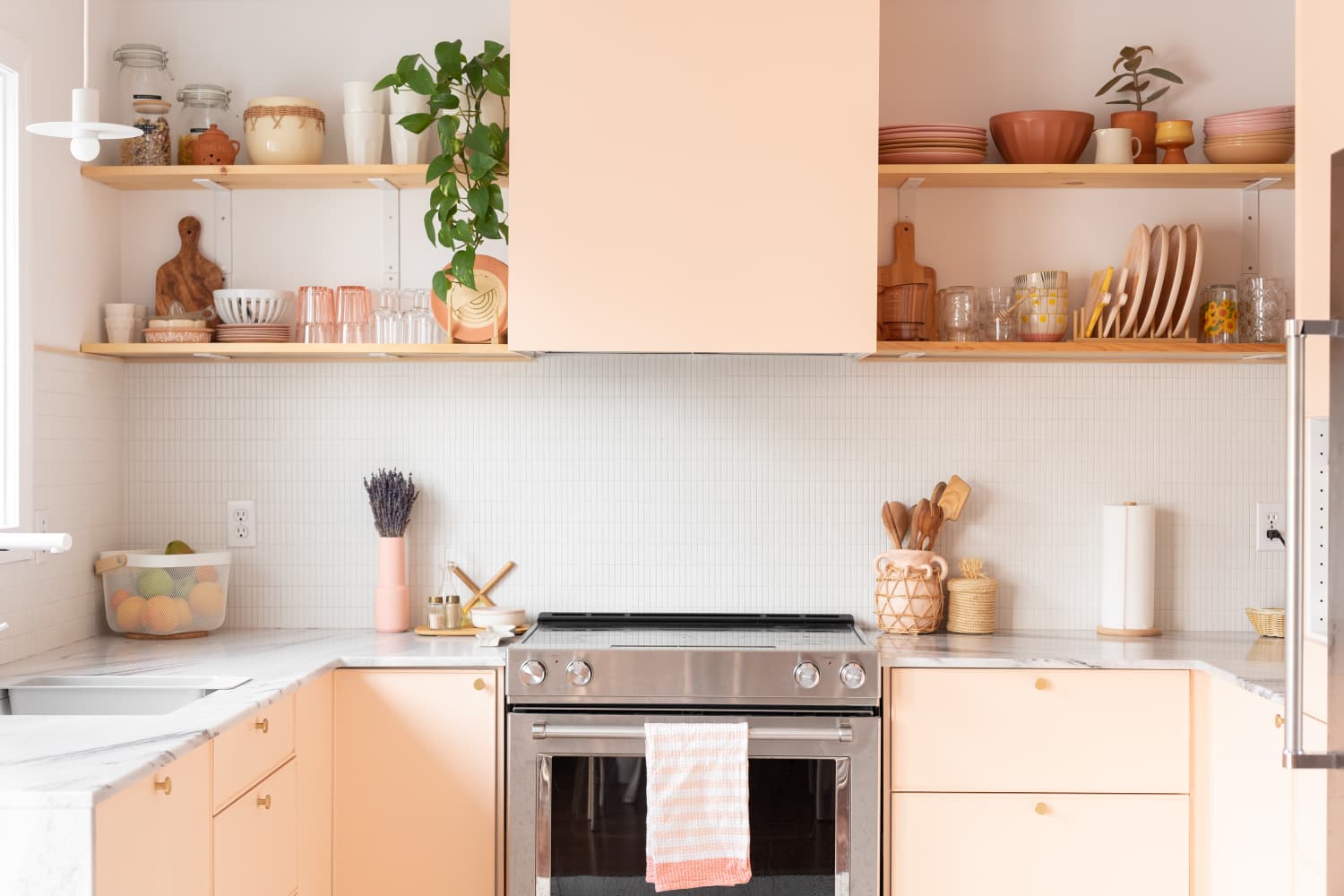We independently select these products—if you buy from one of our links, we may earn a commission. All prices were accurate at the time of publishing.
As cliche as it may sound, the kitchen really is the heart of the home for many people. But whether you’re hoping to buy a house, move into a new apartment, or undertake a renovation project, envisioning the ideal kitchen layout for your situation can prove tricky.
Fortunately, you can draw inspiration from the many other kitchens that have come before yours. Below, find three things that great kitchen layouts share in common, according to real estate experts.
For more content like this follow
Home organization pros often repeat the mantra of “a place for everything and everything in its place.” This means that in order to keep a space neat and tidy, there must be somewhere for all of the items in that space to live permanently.
Well, the same philosophy applies to the kitchen, according to Massachusetts real estate agent Melanie Gundersheim.
“Storage is one of the most important things people look at when evaluating kitchens,” she says. “Even if you’re not much of a cook, your future homebuyer might be.”
The best kitchen layouts have plenty of cabinets, drawers, shelves, hooks, compartments, and vessels for all of your various gadgets and pantry items. Without enough storage, a kitchen will quickly become a “cluttered disaster,” says Gundersheim, thus rendering it practically unusable. (At the very least, all that clutter will probably stress you out.)
If you’re thinking about buying a home, do a storage-focused walk-through in the kitchen first.
“To determine if the kitchen has enough storage for you — which will depend on the person — imagine that you’re moving in as you walk through the space,” she says. “You’re unpacking your pots, pans, condiments, and groceries. Picture yourself opening and closing the cabinets and pantries to fill with your utensils, glassware, and dishes. As you do this, you’ll absolutely be able to get a sense of if this is enough storage space for you or if your kitchen will be in disarray due to the lack of space.”
Anyone who’s ever tried to cook with a roommate or significant other understands the critical importance of good flow in a kitchen. Without it, you end up bumping into each other, jockeying for counter space, elbowing each other for access to the microwave, or impatiently waiting to be able to open the fridge.
Also consider the location of the most-used appliances and their relationships to one another, recommends Kate Ziegler, a real estate agent in Massachusetts and New Hampshire.
“A classic, triangular flow between the fridge, sink, and stove is ideal for anyone using their kitchen to cook regularly,” says Ziegler.
Flow also includes the setup of appliances and gadgets you only get out and use periodically, such as blenders, Instant Pots, and slow cookers. And that means ensuring there are plenty of electrical outlets in convenient locations throughout the kitchen, Ziegler adds.
Though other home design trends come and go, kitchen islands seem to have staying power — and for good reason. Their enduring appeal stems from the fact that they often serve multiple purposes, such as a bar where kids can sit and do homework and an additional cooking prep area. They also typically offer a clear line of sight into the adjoining space, often the living or dining room.
“In addition to its utilitarian function, an island also adds extra visual interest to your kitchen’s design,” says Davis. “It can make it feel bigger by breaking up long expanses of wall cabinets, drawers, and countertops.”
Even if your kitchen isn’t large enough for a permanent island, you’ve still got options.
“Consider a free-standing furniture island or prep table,” says Delyse Berry, cofounder of Upstate Down, a real estate brokerage, interior design firm, and home store in New York. “It’s beautiful, functional, and makes the room feel larger.”
And, if no matter how creative you get, you still cannot fit an island in your kitchen, then a peninsula is the next best option, says Davis.
“Peninsulas create extra balance in a kitchen with limited square footage,” says Davis. “By adding depth to an L-shaped kitchen, they provide more usable surface area while maintaining an open flow within the room.”

